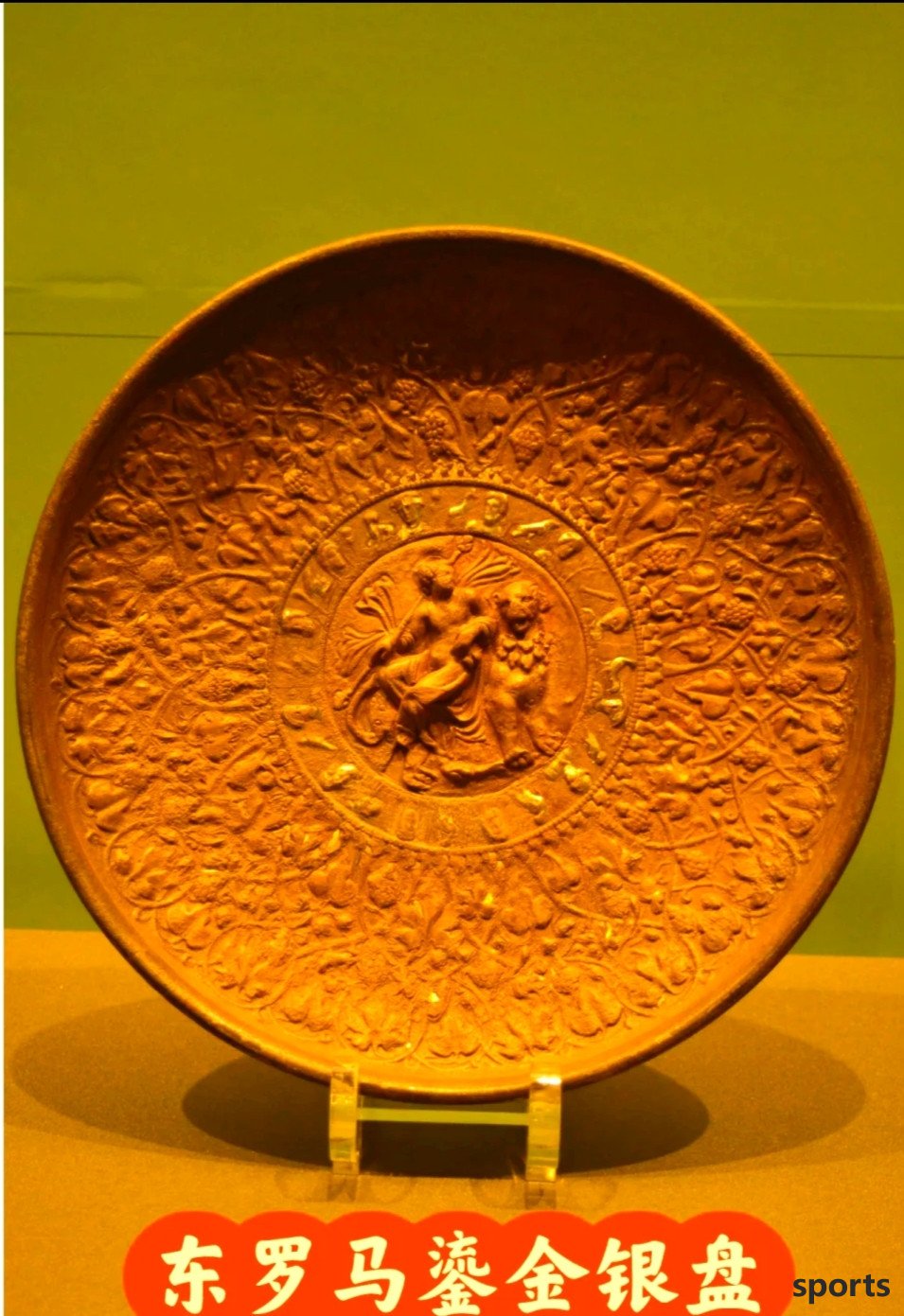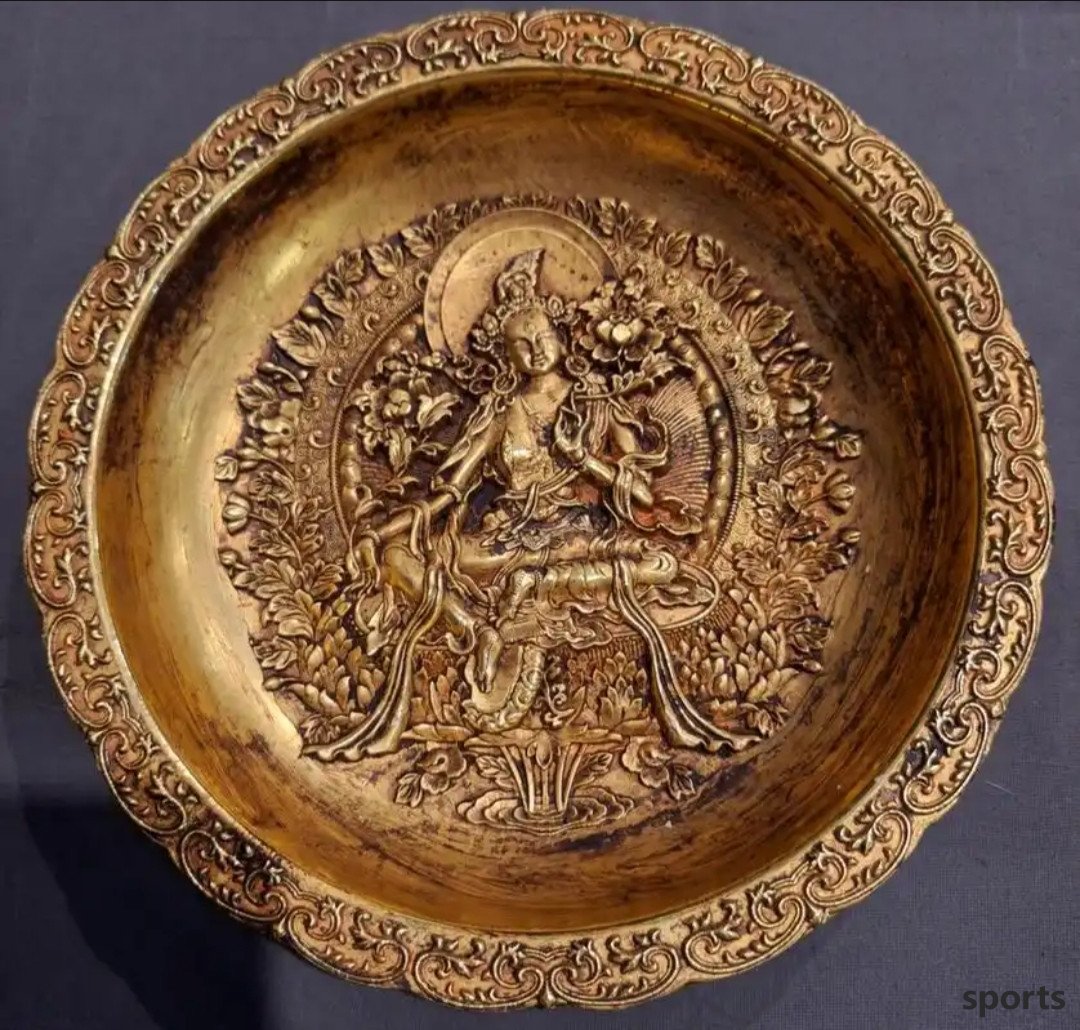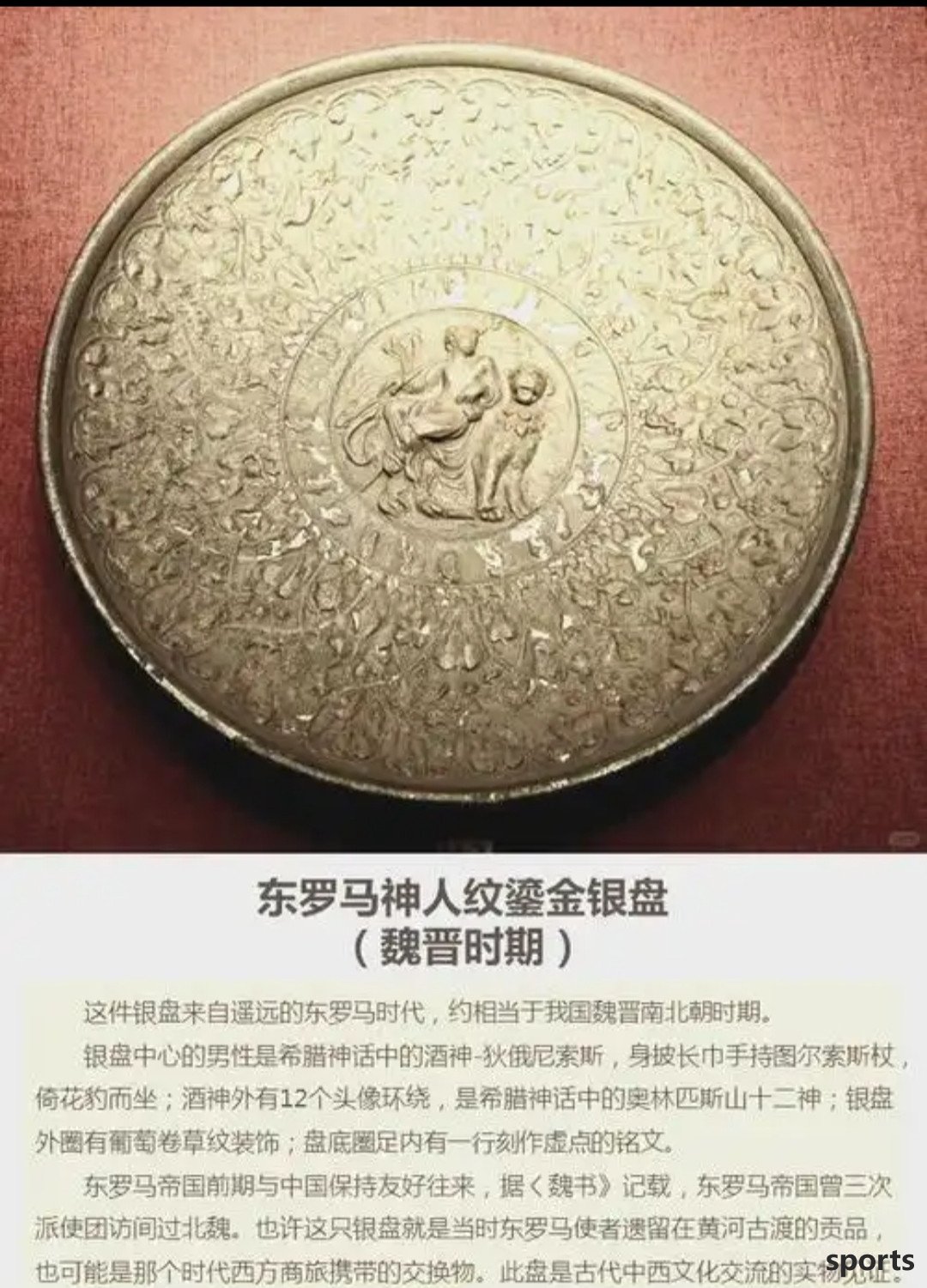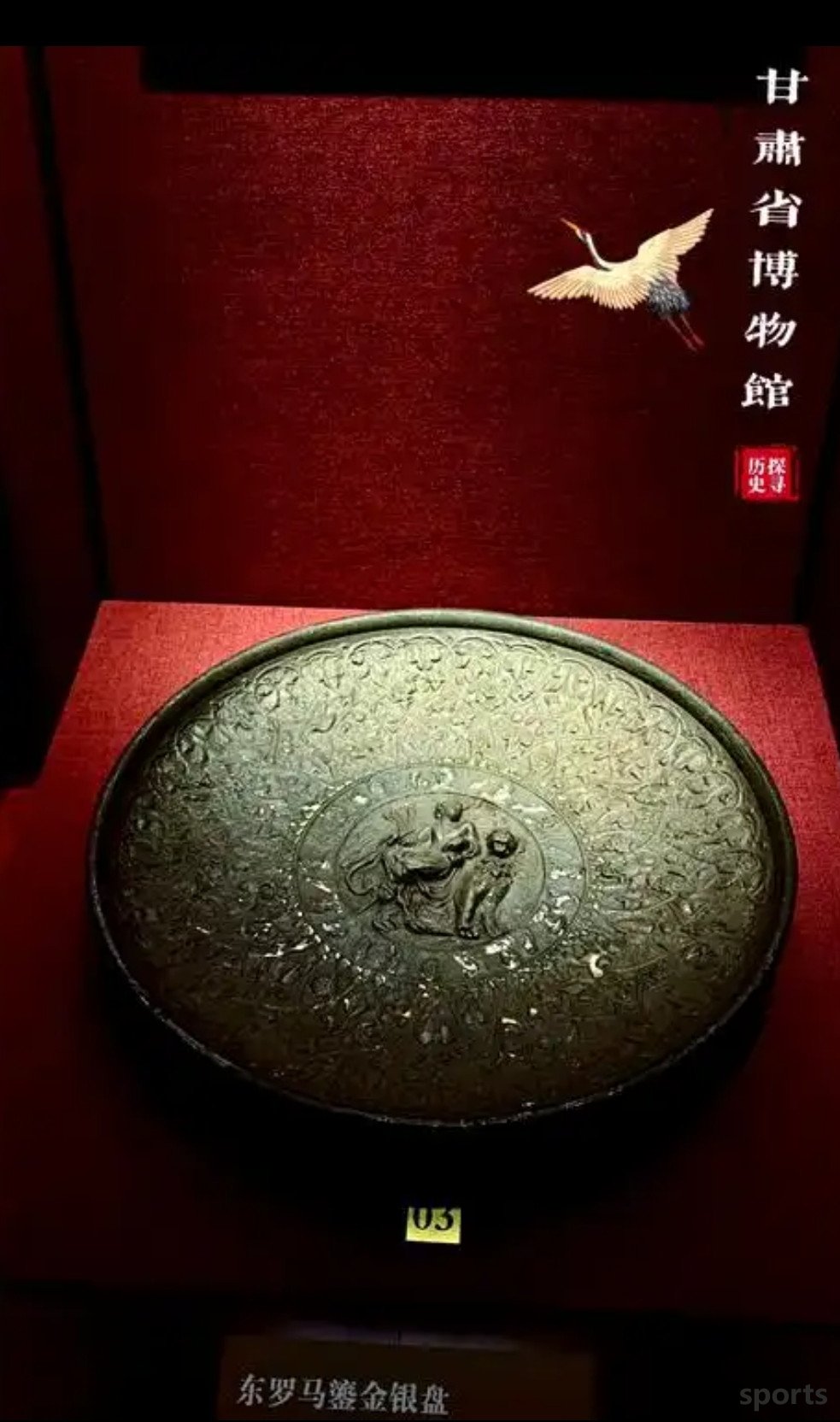289 Sports > Football > Eastern Roman Gilded Silver Plate
Eastern Roman Gilded Silver Plate
The mystery of the Silk Road that traveled through thousands of years: The gilded silver plate in the Eastern Roman region suddenly revealed the civilization code of the ancient Yellow River ferry
The imperial treasures under the loess are
In the summer of 1988, a farmer waved his shovel while repairing his house and accidentally dug a time capsule that had been sleeping for thousands of years. In the soil, a silver plate with a gilded body was shining with a faint light. The young man carved on the heart of the plate stood against the beast, and the faces of the twelve gods appeared among the grape vines - this is the Eastern Roman gilded silver plate that shocked the archaeological world. Its appearance not only rewritten the archaeological history of the Silk Road in northwest China, but also revealed the shocking code of the fusion of ancient Eurasian civilizations. How did this silver plate weighing 3.19 kilograms cross thousands of miles of mountains and rivers, and finally end up in the ancient Yellow River Ferry from the Roman Workshop along the Mediterranean? Does every pattern on it contain a shocking secret to rewrite the history of East-West exchanges?

Chapter 1: Art Decoding - The Oriental Adventure of Dionysus of Dionysus
1.1 Mystery of the Heart of the Pan Heart: The cross-time monologue of Dionysus
The high relief man in the center of the silver plate, curly hair without beards, and sitting leaning on the back of a lion and leopard with a pine cone scepter in his hand. This image is highly similar to the statue of Dionysus unearthed along the Mediterranean coast. In ancient Greek mythology, this god of wine not only pioneered the art of grape winemaking, but also broke the secular shackles with carnival rituals. What is amazing is that the fluidity of the folds of his clothes is exactly the same as that of the ancient Roman sculpture "Aphrodite of Cnydos", and the markings of lions and leopards merge the symbolic symbols of "leopard print" in Persian art. Archaeologists have discovered that its shape has a clear inheritance relationship with the mosaic Baccarat statue at the Pera site in Greece in the 4th century BC, but it adds wild tension in the Central Asian grasslands to the details.
1.2 Pattern code: The twelve gods and the twelve people's avatars in the circle in the grape universe
. Scholars argue endlessly about this: some people believe that this is the twelve main gods of Olympus, while others believe that it is the legion of the attendants of the God of Baccarat. The animal totem on the left side of each avatar adds mystery - the eagle and falcon symbolize the sun god Apollo, the snake eyes hint at the doctor Asclepius, and the scorpion entrenched in secret with the death totem of Mesopotamia. In the outer circle of grape-curved grass patterns, the hidden figures of lizards and bees form the miniature universe of ancient Greece's "nature worship". This design that integrates myths, animals and plants and geometric patterns is the ultimate expression of the Mediterranean art idea of "all things have spirits".
1.3 Unexpected inscription: The price code behind the Great Xia text
dot-shaped inscription with a fuzzy bottom of the disk was once misread as Buddhist Sanskrit or Persian cuneiform. It was not until the 1990s that the puzzle gradually solved after linguists discovered similar words at the Daxia site in Afghanistan. Chinese scholar Lin Meicun proposed that the inscription is actually a price tag of "worth 490 gold coins", while Japanese scholar Mie Ishido has verified that it may record the collection number of a Sassanian noble. No matter the truth, this passage is like a key, opening the door to the trade network from the Mediterranean Sea to the Pamir Plateau.

Chapter 2: A Millennium Journey - Thrilling Drift from the Roman Workshop to the Yellow River Ferry
2.1 Time and space folding: The Silk Road Undercurrent in the third century
Radiocarbon detection shows that silver plates were cast in the Eastern Roman province in the 2nd to 3rd century AD. At that time, it was the end of the "Five Sages of Emperors" of the Roman Empire, and caravans were endless on the Silk Road. Roman gold coins discovered by archaeologists at the Begram site in Afghanistan echoes the Hellenistic style in the silver plate patterns. What is even more intriguing is that its casting place may not be native to Rome—the hammering technique of Carthage Workshop in North Africa and the enamel inlay technology of Asia Minor together constitute the genetic map of this mixed-race masterpiece.
2.2 Mistakes of the Western Regions: Second creation of the Kushan Dynasty
In the 3rd century AD, Sassanthemum defeated the Parthian Empire and controlled the western section of the Silk Road. The silver plate was engraved with the inscription of the Great Xia text at this time, suggesting that it might have flowed into the Kushan Empire as a spoil or tribute. In the Kabul Museum in Afghanistan, a scene of Greek God of Dionysia and Buddhism dancing together in the sky can also be seen on a silver pot of Daxia of the same period. This cultural overlap phenomenon confirms the "Hellenistic-Kushan-Han and Tang" civilization transmission chain proposed by Mr. Ji Xianlin. It was during this period that the silver plate was re-golded by a Silk Road giant and invested in transnational trade as a "hard currency".
2.3 The Yellow River Jinghong: The accidental pearl of the Northern Wei mission
The Book of Wei records that the Eastern Roman Empire sent envoys to the Northern Wei three times, and the latest team of envoys arrived in Pingcheng (now Datong) in 435 AD. Jingyuan is located at the ancient Yellow River crossing "Shenyinkou", and is a must-pass place for the caravans in the Hexi Corridor to cross the river. Experts speculate that the silver plate may sink into mud and sand in a river crossing accident in the 4th to 5th century - imagine: a camel caravan full of silk and spices encountered a mountain torrent, and the treasure chest of the Roman envoy drifted with the flow. This silver plate carrying the glory of the Mediterranean was waiting under the loess for fifteen centuries.

Chapter 3: Civilization Revelation - When Roman craftsmen meet Oriental Business Travel
3.1 Technical Dialogue: The collision of lost wax and hammering techniques
The casting process of silver plates reveals amazing technical exchanges. The main body is cast by traditional Roman lost wax method, while the curly grass pattern on the edges has traces of hammering from the Rest Dynasty. What is even more amazing is that the three-dimensional effect of the high relief of the disc center requires the heat of the silver sheet to be above 600℃ and repeatedly beat it. This "hot processing and inlay" technology is similar to the gold, silver and copper priest unearthed from the tomb of Zeng Houyi in China during the Warring States Period. Artisans in the East and West may have discussed the ductility of metal in different languages in workshops in Samarkand.
3.2 Monetary Revolution: From payment tools to art carriers
In the late Roman Empire, precious metal vessels gradually replaced gold coins and became symbols of aristocratic status. The "non-practical" tendency of this silver plate is in contrast to the "Yongning Temple Golden Buddha" unearthed in Luoyang, Northern Wei Dynasty. When the commodity economy gave birth to a luxury market, the symbolic value of art began to surpass practical functions.. The circulation of silver plates on the Silk Road is essentially a "performance art" that spans the mainland. Merchants exchange it for silk, nobles demonstrate their taste through collection, while monks regard it as the incarnation of foreign gods.
3.3 Ecological mirror: grape patterns on the silver plate of grapes, wine and civilization migration, expose the "biological migration history" of the Silk Road. After Zhang Qian opened up the Western Regions, grape planting spread along the Hexi Corridor, and by the Wei and Jin Dynasties, the brand of "Liangzhou Grape Wine" had been formed. Interestingly, the Han and Jin brocade unearthed from the Niya site in Xinjiang contains both Greek-style grape patterns and Central Plains cloud patterns. This cultural hybridization phenomenon is just like the coexistence of Greek gods and Persian beasts on the silver plate, proving that civilization has never spread alone, but is constantly fission and rebirth in collisions.

Chapter 4: Modern Echoes - Global Drifting Records of the Treasure of the Town Hall
4.1 Exhibition Diplomacy: From Jingyuan Tuwu to the Louvre booth
As the "Treasure of the Town Hall" of the Gansu Provincial Museum, silver plates have frequently appeared in international exhibitions in recent years. In the 2019 Tokyo National Museum's "The Treasure of the Silk Road" special exhibition, it was on the same stage as Persian silver pots and Roman gold coins, forming the special topic of "Dialogue of the Empire". The curator specially marked the exhibition sign: "This exhibit proves that Roman craftsmen in the 3rd century AD may have mastered the wrong gold craftsmanship of Chinese lacquerware." This academic mutual learning has allowed cultural relics to transcend regional narratives and become a public issue in the history of global civilization.
4.2 Digital Rebirth: Unsolved Mysteries in 3D Modeling
In 2023, the Gansu Provincial Museum and Stanford University launched the Silver Disc Digital Recovery Project. High-precision scanning found that there were slight wear marks of pine cones on the right hand of the Baccaratus Panxin, and it was speculated that it had been repeatedly rubbed as a sacrificial instrument. What is even more shocking is that there are traces of cinnabar left in the inscription sink - perhaps a thousand years ago, a Sogdian merchant had swear to worship the Roman gods as the guardian gods of the caravans. These digital details have shifted the narrative of cultural relics from static display to dynamic puzzle solving.
4.3 Culture and Tourism Integration: Immersive Experience of the Ancient Ferry of the Yellow River
Jingyuan County uses silver plate IP to create the "Silk Road Secret Land" cultural and tourism project: Visitors can wear Roman robes and experience "Western Regions Business Travel Passing through the Grade" in the restored Han Dynasty ferry scene; AR technology restores the silver plate casting process, and the audience operates the virtual hammer tool by hand; when night falls, the light and shadow show projects the silver plate pattern to the surface of the Yellow River, interpreting the mythological epic of "Divine God Crossing the River". This innovative communication has made the sleeping cultural relics truly "live".
The legend of the future of the gilded silver plate of Eastern Roman at the intersection of civilization is like a prism, reflecting the most moving spectrum of human civilization. When we stare at this exotic treasure in front of the museum display cabinet, we see not only the ingenuity of ancient Roman craftsmen, but also the footprints of countless unknown business travelers traveling through the wind and sand, the wonderful resonance between Greek philosophy and the Central Plains rituals and music, and the eternal light bursting out in the collision of civilization. Just like the Roman glassware held by Feitian in Dunhuang murals, this silver plate reminds us that true civilization will never live forever in self-admiration. Only through exchanges and mutual learning can it bloom the charm of transcend time and space.
At this moment, the sound of the ancient crossing of the Yellow River is still there. Those treasures of the Silk Road sleeping deep in the riverbed are still waiting for the next discoverer, waiting for them to uncover more shocking codes for the fusion of civilizations.
Related Posts
Gibbs-White: Hopefully these three points get us out of the relegation zone; Liverpool are still great
FootballHupu News on November 23, Premier League, Liverpool 0-3 Nottingham Forest. After the game, Nottingham Forest captain Morgan Gibbs-White was interviewed by Premier League Productions (PLP). "This is something I didn't expect, but it happened...
【Football】
moreAfter losing all their first four Premier League starts, Isaac set a century-old embarrassing record for Liverpool
FootballIn the 12th round of the Premier League, they were defeated 0-3 by Nottingham Forest. Liverpool's high-priced Swedish forward Alexander Isak was once again disappointing - he only touched the ball 15 times in 67 minutes, with no results. This de...
【Football】
moreWang Shenchao: There are a lot of changes in the team s personnel this year. As long as you do your best, everything will go with the flow.
Footballchampion. After the game, Wang Shenchao accepted interviews with the media. I would like to ask the Kings first, did you think at the beginning of the season that they could win the league championship this year? Wang Shenchao replied: To be honest,...
【Football】
more
Hot Posts
- According to the latest FIFA rankings, the national football team ranks 93rd, and Italy falls out of the top 10
- Manchester United Financial Report 2: Cash flow is almost exhausted + debt interest is rising, results are life-saving straw
- Carragher: Lajue repeats his mistake, Tenghahe is the first to protect the "Lin"
- Falk: Liverpool, Real Madrid, Manchester United, Paris is interested in signing Upamecano without a sign tomorrow summer
- The French club with the most competitions in the European competition: Paris ranked first in 294 games, Lyon second in the
- 4: 4! 8 goals in halftime, 2 goals and 1 assist, Juventus scored 2 goals in a row in stoppage time, tied Dortmund in 96 minutes
- La Liga Comprehensive: Mbappe passes and shoots Real Madrid leads
- 40-year-old Ronaldo shows his power: Heavy shooting world wave, live perspective, too silky
- In a game, Real Madrid welcomes the strongest center! Mbappe has 3 goals in 2 La Liga games, Alonso is happy
- Leipzig after the game: Apologize to the fans, 0-6 is too bad, absolutely not to collapse like this
Recent Posts
-
Turkish Super League 33 rounds: Mourinho is miserable, Fenerbahce is shocked Istanbul
-
Basically confirmed to stay in the team! Barcelona official: Ter Stegen will undergo a second lumbar spine surgery next week
-
For Alonso, the most embarrassing possibility is to lose the first round of the national derby next season
-
Taishan vs Yukun starts!
-
Xabi Alonso plays in the Bundesliga again. Can Real Madrid break the Dortmund curse?
-
Nunez poured champagne at the Muslim Salah? In fact, that was 0 alcohol champagne drinks
-
Blowing Bellin s final score + red card sent off! Real Madrid TV: The referee of this round is the protagonist of the biggest scandal in recent years
-
25 years old is considered old, but 21 years old is appropriate. Real Madrid must rely on children to win the future?
-
Spanish media: Managing Mbappe has become the primary focus of Alonso s reshaping the locker room, Enrique Anshuai has failed
-
They were defeated 0-7! In the last 9 Premier League away games against Liverpool, Manchester United had 5 draws and 4 losses without a win, including 4 games of 0-0.